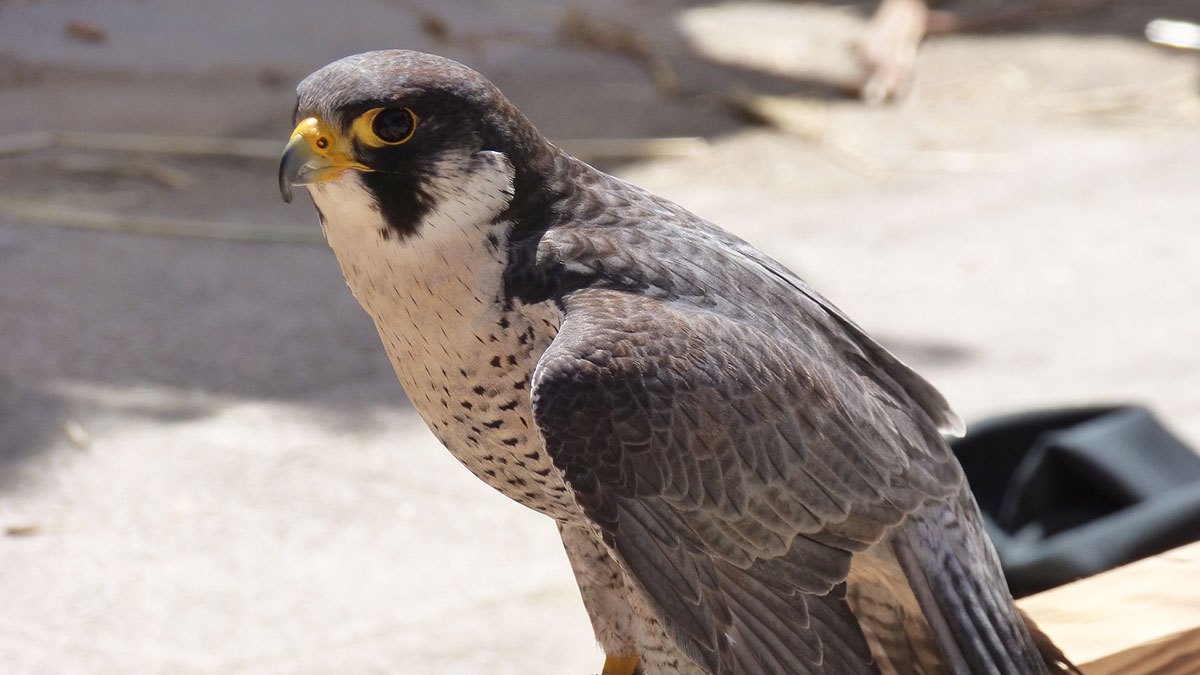 Supplied
SuppliedOn top of the Clinical Sciences Building at the University of Alberta, a pair of peregrine falcons are waiting for their eggs to hatch — along with a large community of online viewers.
The Alberta Conservation Association (ACA) is bridging science with public interest with their Peregrine Camera Project, a 24/7 livestream from four peregrine falcon nest boxes around Edmonton. Through the project, the public can watch the local at-risk species raise their young.
This year on the U of A camera, birdwatchers are tuning in to Radisson and Chase, a pair of peregrines who raised three chicks together in 2013 and four chicks in 2014. Radisson got her name from the Radisson Hotel in Winnipeg, Manitoba where she was hatched in 2006. In 2008, she started nesting at the U of A and has been returning ever since. It’s one of the best nesting sites in Edmonton, ACA Communications Coordinator Elize Uniat said.
“The Bell Tower is the most coveted nesting spot in Edmonton because it’s the highest” Uniat said. “The Clinical Sciences Building at the U of A is the second most coveted. The higher you are the better.”
One of Radisson’s daughters hatched in 2013, known as “Green girl”, has returned to Edmonton and will be attempting to raise her first clutch at another livestreamed nest site.
In Alberta, peregrine falcons were almost extirpated, meaning extinct within given region. With the widespread use of the pesticide DDT in the 70s, peregrine numbers all-time low — high concentrations of the chemical cause eggshells to be thinner and easily breakable, so reproduction became nearly impossible. In the 1970 peregrine survey, only three known peregrine territories in Alberta were occupied. After careful captive breeding and re-introducition programs, the birds have returned to nearly two-thirds of their original, pre-DDT population. The latest peregrine survey in 2010 found 68 territories occupied.
“It’s a great conservation success story,” Colin Eyo, ACA Multimedia Coordinator said.
Peregrine nest boxes, including the one at the U of A, have been maintained around Edmonton for years. Their resident falcons being monitored for scientific purposes. In 2011, the ACA was tasked with equipping a nest box with a camera and broadcasting its feed online. Now, four nest boxes around the city have livestreams, which can be viewed by anyone curious about a peregrine falcon’s daily life.
The cameras are continuing to gain popularity, Eyo said. The birds even have an online fan community that keeps track of events on the livestreams, including egg-laying times and hatch times.
“Ever since (the feed has) been stabilized, you can have as many viewers as you want. Now the traffic and the number of page views has skyrocketed,” Eyo said. “I keep saying to myself every year, there can’t be more (page views)… And every year it is more.”
Right now, the peregrines are in incubation phase, which lasts for a little over a month. In June, eggs will hatch and viewers will be able to watch the peregrine chicks grow and fledge.
“It’s a view into a wild animal’s life that you just cannot get any other way,” Uniat said. “And it’s a fascination to watch.”
The 2015 Peregrine Cams can be viewed here.





Thoughtful discussion ! I loved the information , Does someone know if I might acquire a sample a form document to work with ?
Greetings Meta! I found a fillable a form version with this link
https://goo.gl/7yTca4would love more information – thank you
July 17th 1800hrs: I spotted one of the little falcons down on the ground. It was in the pedestrian alcove that leads to the U of A Hospital West parkade on the exit side. Ground level. 84th avenue between 112 and 113 avenue. I didn’t want to hurt it (or myself) trying to catch it so I shooed it into the bushes just around the corner. There was a robin in the tree there freaking out but it eventually flew away. I called Conservation and someone went out to find it but didn’t. If anyone is there keep an eye out for it!